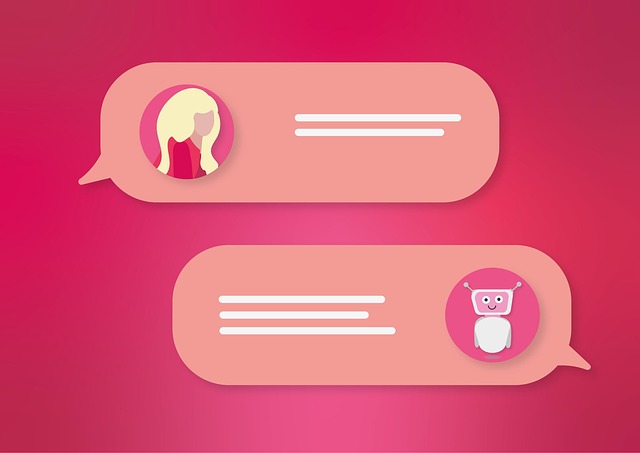AI chatbots are revolutionizing online interactions by providing dynamic, personalized experiences through natural language processing (NLP). With 24/7 accessibility, they enhance user engagement and satisfaction, offering instant support for queries, recommendations, and customer service. Development begins with defining the chatbot's purpose and identifying target audience expectations, guiding its conversational style and knowledge base. Effective AI chatbots are built using suitable development tools like Dialogflow, IBM Watson Assistant, or Rasa, depending on complexity and desired AI capabilities. Conversational flow design, high-quality training data, and continuous improvement post-deployment ensure engaging and accurate responses. Deployed across various online platforms, these AI chatbots meet the growing demand for personalized digital experiences.
In today’s digital landscape, AI chatbots have become indispensable tools for businesses seeking to enhance customer engagement and streamline operations. This comprehensive guide explores the step-by-step process of creating an effective chatbot. From understanding the fundamentals of AI chatbots and their benefits, to defining specific purposes and target audiences, choosing suitable development platforms, designing intuitive conversational flows, and continuous improvement through testing—we cover it all. Discover how to harness the power of AI chatbots to elevate your online presence.
- Understanding AI Chatbots: Their Functionality and Benefits
- Defining Your Chatbot's Purpose and Target Audience
- Choosing the Right Development Tools and Platforms
- Designing Conversational Flows and Training Data
- Deployment, Testing, and Continuous Improvement
Understanding AI Chatbots: Their Functionality and Benefits

AI chatbots have revolutionized the way we interact with technology, offering a dynamic and personalized experience to users worldwide. These intelligent virtual assistants are designed to simulate human conversation, providing information, answering queries, and performing tasks through natural language processing (NLP). The functionality of AI chatbots is extensive; they can engage in complex discussions, learn from user interactions, and adapt their responses accordingly.
One of the key benefits of AI chatbots is their accessibility. They are available 24/7, ensuring users receive instant support or information whenever needed. Whether it’s answering frequently asked questions, providing product recommendations, or offering customer service, these chatbots enhance user engagement and satisfaction. With the rise of online interactions, AI chatbots have become a game-changer, bridging the gap between businesses and their customers in an effective and efficient manner.
Defining Your Chatbot's Purpose and Target Audience

Defining your chatbot’s purpose is a critical step in its development. Before you begin, consider who your target audience is and what they need from an AI chatbot online. Are you creating a customer service assistant to handle basic queries? Or perhaps a more advanced personal assistant for task management and information retrieval?
Knowing your audience allows you to shape the chatbot’s conversational style, tone, and knowledge base accordingly. Tailor its capabilities to meet their specific needs, whether that’s providing quick support, offering personalized recommendations, or assisting with complex tasks. This focus on purpose and target audience will ensure your AI chatbot online is effective and engaging for users.
Choosing the Right Development Tools and Platforms

Creating an AI chatbot involves selecting the right development tools and platforms, tailored to your project’s specific needs. Popular choices include Dialogflow (Google), IBM Watson Assistant, Microsoft Bot Framework, and Rasa, each offering unique features for building conversational interfaces. These platforms vary in terms of coding requirements, natural language processing capabilities, and integration options with existing systems.
For beginners, platforms like Chatfuel or ManyChat provide a user-friendly interface, allowing you to build simple chatbots without extensive coding knowledge. Conversely, advanced developers might prefer more complex tools like Dialogflow CX, which offers sophisticated NLP and allows for intricate conversation flows. When choosing, consider your chatbot’s complexity, desired AI capabilities, scalability, and the team’s technical expertise – whether you’re building an in-house or an online AI chatbot.
Designing Conversational Flows and Training Data

Designing the conversational flow is a critical step in creating an engaging and effective AI chatbot. This involves mapping out different user scenarios, developing branching dialogues, and anticipating potential questions or responses. The goal is to create a seamless conversation that feels natural and intuitive for users interacting with the bot online. By planning these interactions meticulously, developers can ensure the chatbot provides valuable assistance while maintaining a pleasant user experience.
Training data plays a pivotal role in shaping the intelligence of the AI chatbot. High-quality, diverse datasets are essential to teach the model how to understand and respond accurately. Developers should curate content that represents various user queries, language nuances, and context-specific scenarios. The more comprehensive the training data, the better the chatbot can generalize and adapt its responses, enabling it to handle a wide range of conversations with users interacting online through chat or messaging platforms.
Deployment, Testing, and Continuous Improvement

Once your chatbot is developed and trained, deployment is the next crucial step in bringing it to life. Making your AI chatbot online accessible allows users to interact with it, providing valuable feedback and insights. Testing plays a vital role before and after deployment. Thorough testing ensures the chatbot functions as intended, accurately understanding user queries and generating relevant responses. Regular assessments help identify any bugs or areas for improvement, enhancing the overall user experience.
Continuous improvement is essential for maintaining and refining your AI chatbot over time. By gathering user feedback and analyzing interaction data, you can make informed decisions to enhance performance. Integrating new features, updating knowledge bases, and optimizing algorithms based on user interactions will keep your chatbot relevant and effective in a dynamic digital landscape. Regular updates ensure that the ai chatbots online remain competitive and cater to evolving user needs.
Creating an AI chatbot involves a strategic process from conceptualization to deployment. By understanding the power of these virtual assistants, defining their purpose for your specific audience, and utilizing the right development tools, you can bring your own unique chatbot to life. Effective conversational flows and high-quality training data are key to ensuring a seamless user experience. Once launched, continuous testing and improvement ensure your AI chatbot stays relevant and provides immense value in the realm of online interactions.
